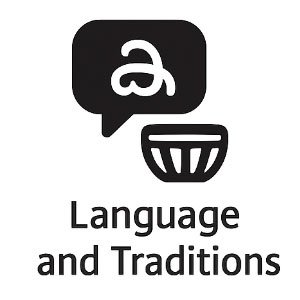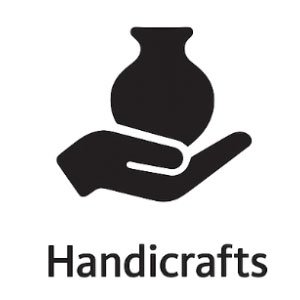

Kerala Language and Traditions
Kerala, a state on India’s tropical Malabar Coast, is renowned for its unique blend of linguistic diversity and rich cultural traditions. Kerala Language and Traditions are a testament to the region’s historical evolution and the harmonious coexistence of various communities. Understanding Kerala Language and Traditions offers a glimpse into the heart of Kerala’s identity and heritage.
Main Languages Spoken
Malayalam - The Heart of Kerala's Linguistic Identity
Malayalam is the official language of Kerala and is spoken by the majority of its population. It is a Dravidian language with a rich literary tradition dating back centuries.
Key Highlights:
- Script and Literature: Malayalam has its own script and a vast body of literature, including classical and contemporary works.
- Dialect Variations: Different regions of Kerala have distinct Malayalam dialects, adding to the language’s diversity.
- Cultural Expressions: Many traditional songs, poems, and theatrical performances are in Malayalam.




Other Languages in Kerala
In addition to Malayalam, several other languages are spoken in Kerala due to its diverse population and historical trade connections.
- Tamil: Spoken by a significant number of people, especially near the Tamil Nadu border.
- Kannada: Common in regions bordering Karnataka.
- English: Widely used for education, business, and official purposes.
- Hindi: Also spoken by many, particularly in urban areas and by migrants.
Linguistic Diversity
Kerala’s linguistic landscape is dominated by Malayalam, a Dravidian language with a rich literary heritage. Malayalam is the medium of everyday communication and the language of classical and contemporary literature, film, and media. Kerala is also home to speakers of Tamil, Kannada, and Tulu, particularly in border regions. English is widely understood and used in education and business, adding to the state’s multilingual capabilities.
Key Highlights:
- Primary Language: Malayalam, a Dravidian language with a rich literary tradition.
- Other Languages: Tamil, Kannada, Tulu, and English.
- Literary Heritage: Strong tradition of classical and contemporary literature.




Traditional Attire and Customs
Traditional Dress in Kerala
Kerala’s traditional attire is a significant part of its cultural heritage. Both men and women wear distinctive garments that reflect the state’s customs and climate.
Key Highlights:
- Mundu and Neriyathu: Traditional dress for men, often worn with a shirt.
- Kasavu Saree: A beautiful white and gold saree worn by women during festivals and special occasions.
- Jewelry and Accessories: Traditional jewelry, including gold ornaments, plays a vital role in Kerala’s cultural attire.




Traditional Art Forms
Kerala is famous for its traditional art forms, which are an integral part of Kerala Language and Traditions. Kathakali, a classical dance-drama, and Mohiniyattam, a graceful dance form, are performed in the Malayalam language, blending storytelling with intricate movements. Other art forms, such as Theyyam and Koodiyattam, showcase the state’s cultural heritage through elaborate costumes, music, and dance.
Classical and Folk Dances
Kerala is renowned for its classical and folk dances, which are integral to its cultural identity.
Key Highlights:
- Kathakali: Classical dance-drama known for its elaborate costumes and makeup.
- Mohiniyattam: Graceful dance form performed by women.
- Theyyam and Koodiyattam: Traditional rituals and theater performances.
Traditional Music
Music is an essential part of Kerala’s traditions, with a variety of classical and folk music styles.
Key Highlights:
- Carnatic Music: A classical music form with deep roots in Kerala.
- Folk Songs: Songs that depict daily life, folklore, and historical events.
- Temple Music: Unique musical traditions associated with temple festivals and rituals.




Festivals and Celebrations
Kerala’s festivals are a vibrant reflection of its cultural diversity. Onam, the state festival, is celebrated with grand feasts, boat races, and floral decorations, showcasing the essence of Kerala Language and Traditions. Vishu marks the Malayalam New Year with special rituals and feasts. Religious festivals such as Christmas, Eid, and Diwali are also celebrated with equal fervor, highlighting the state’s inclusive spirit.
Key Highlights:
- Onam: State festival featuring grand feasts, boat races, and floral decorations.
- Vishu: Malayalam New Year celebrated with special rituals and feasts.
- Multi-religious Celebrations: Christmas, Eid, and Diwali.




Cultural Customs and Practices
Kerala’s traditions encompass a wide range of customs practiced during festivals, life events, and daily life.




Key Highlights
- Onam and Vishu: Major festivals celebrated with elaborate customs and rituals.
- Marriage Traditions: Unique ceremonies and rituals are part of Kerala weddings.
- Housewarming and Naming Ceremonies: Cultural practices followed during these significant life events.
Traditional Cuisine
Kerala’s cuisine is a significant aspect of its traditions. The use of local spices, coconut, and rice in dishes such as Sadhya, Appam, and Puttu reflects the state’s culinary heritage. The unique flavors and preparation methods of Kerala cuisine are passed down through generations, preserving the authentic taste and essence of Kerala Language and Traditions.




Key Highlights
- Key Ingredients: Local spices, coconut, and rice.
- Popular Dishes: Sadhya, Appam, and Puttu.
- Culinary Heritage: Traditional flavors and preparation methods.
Conclusion
Kerala Language and Traditions form the backbone of the state’s cultural identity. The harmonious blend of languages and the rich tapestry of traditions make Kerala a unique and vibrant destination. Exploring Kerala Language and Traditions provides a deeper understanding of the state’s heritage, celebrating its past while embracing modernity.




Key Highlights
- Kochi Metro: This rapid transit system connects key areas of Kochi, offering a fast and reliable mode of transportation.
- Public Buses and Taxis: Urban areas are well-served by public buses, taxis, and auto-rickshaws, providing flexible options for city travel.
- Ride-Sharing Services: Popular ride-sharing services like Uber and Ola are available in major cities, offering convenient transportation options.







